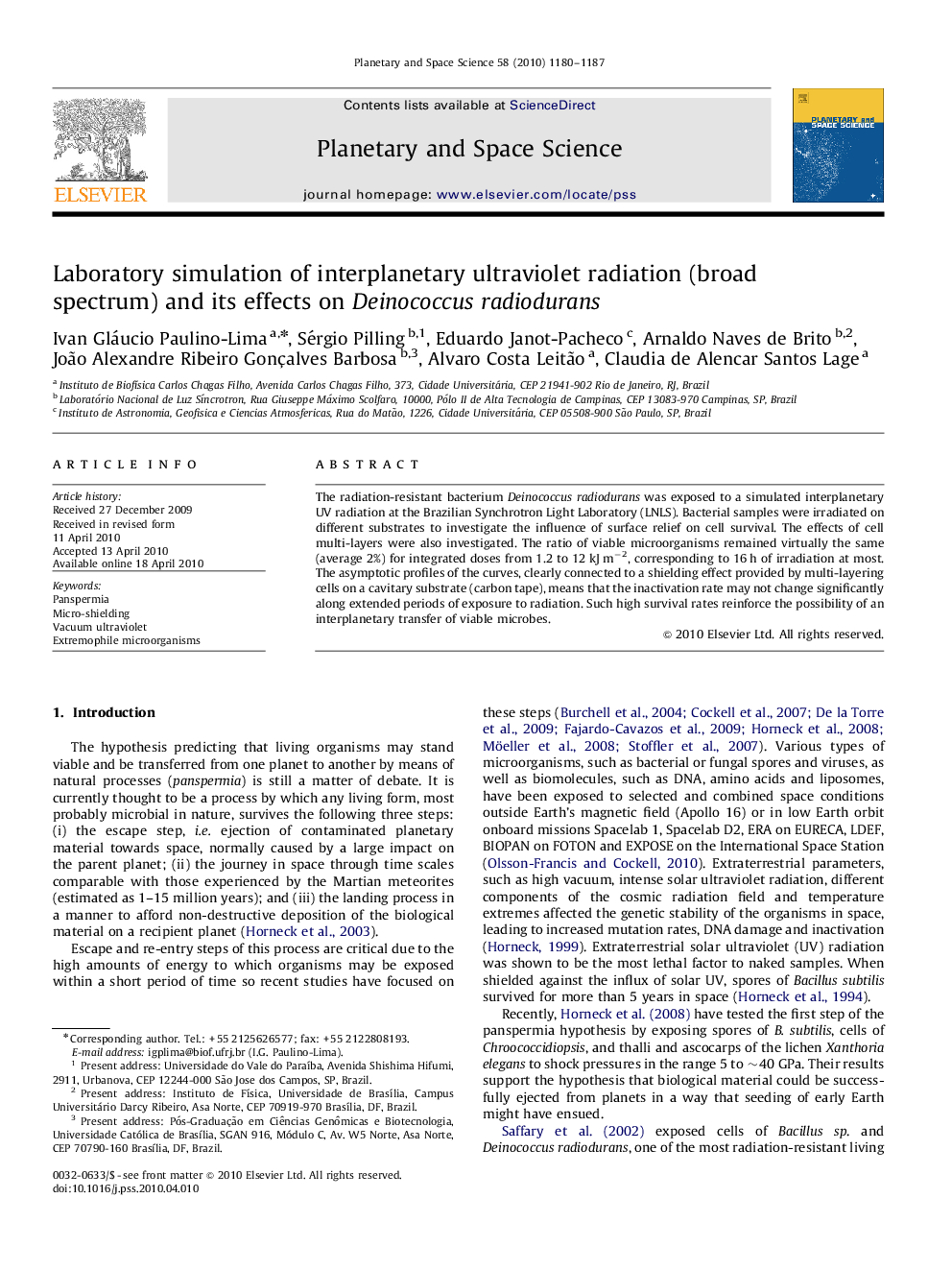| کد مقاله | کد نشریه | سال انتشار | مقاله انگلیسی | نسخه تمام متن |
|---|---|---|---|---|
| 1781707 | 1022299 | 2010 | 8 صفحه PDF | دانلود رایگان |

The radiation-resistant bacterium Deinococcus radiodurans was exposed to a simulated interplanetary UV radiation at the Brazilian Synchrotron Light Laboratory (LNLS). Bacterial samples were irradiated on different substrates to investigate the influence of surface relief on cell survival. The effects of cell multi-layers were also investigated. The ratio of viable microorganisms remained virtually the same (average 2%) for integrated doses from 1.2 to 12 kJ m−2, corresponding to 16 h of irradiation at most. The asymptotic profiles of the curves, clearly connected to a shielding effect provided by multi-layering cells on a cavitary substrate (carbon tape), means that the inactivation rate may not change significantly along extended periods of exposure to radiation. Such high survival rates reinforce the possibility of an interplanetary transfer of viable microbes.
Journal: Planetary and Space Science - Volume 58, Issue 10, August 2010, Pages 1180–1187